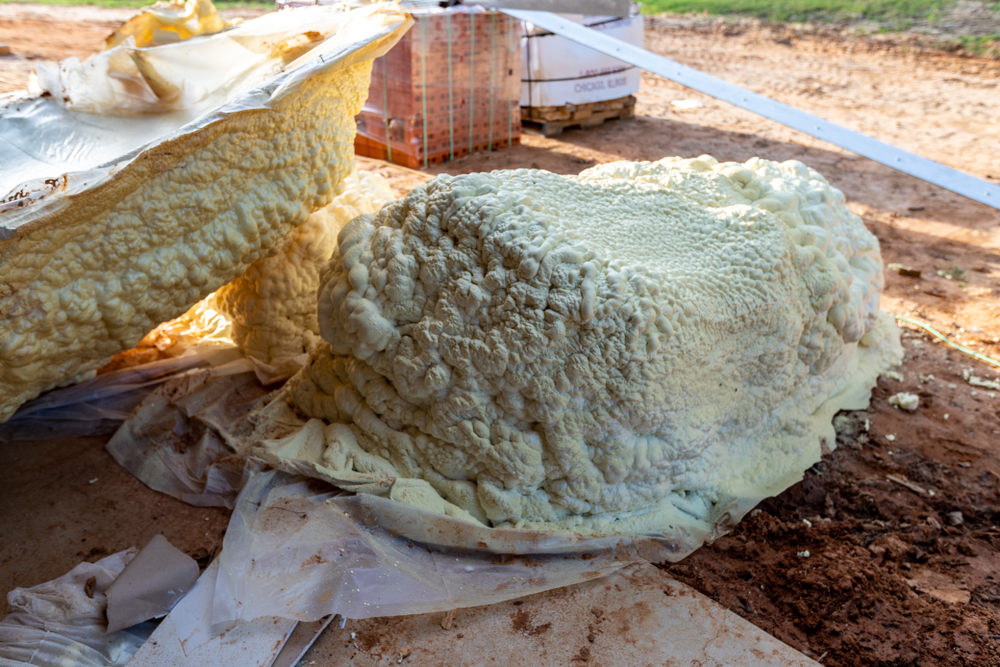You’re finally ready to apply spray foam insulation to your newest project, but there’s only one problem. The weather report was wrong! It’s hot out today! Can you install spray foam insulation in these conditions?
Spray foam insulation is a versatile material. While the ideal application temperature ranges between 60 and 80 degrees, you can apply it in room temperatures of up to 120 degrees, though you may face issues such as crusting and crumbling.
What other issues arise from high temperatures? Are there ways to circumvent the consequences of high temperatures when applying spray foam? How can I apply spray foam in hot temperatures?
Read on to learn everything that you need to know about spray foam insulation and hot weather. Can you install spray foam insulation in high temperatures? The answer is yes!
Can Spray Foam Be Applied When It’s Hot?
“Hot” is a subjective term. What one person considers hot might be an average temperature for somebody else.
The generally accepted threshold for “hot” is 90 degrees Fahrenheit or above, so we will use this as our basis.
As a rule of thumb, you can spray foam in hot temperatures, but your spray foam may not cure properly.
Ultimately, this is a failure of all types of spray foam. While fire-resistant spray foam can help prevent extreme heat from combusting your insulation, no insulation yet has a built-in measure to counteract heat while applying or curing.
You should not solely consider your outdoor temperature. If your attic or basement is a different temperature than the rest of your home, or if it feels particularly hot, take a separate temperature reading.
If the ambient or surface temperature of your workspace is over 90 degrees, regardless of whether it is indoors or outdoors, consider postponing your spray foam application until better weather comes around.
Are There Downsides To Applying Spray Foam In Hot Weather?
There are plenty of downsides to applying spray foam in high heat. The first issue is that your spray foam will cure faster, which may seem like an upside, but it comes with negative effects.
If spray foam is in a heated environment, it may shrink, crack, and take on a crusty and flaking composition.
When spray foam insulation cracks or shrinks, it minimizes the insulation’s R-value and renders it less effective due to exposure to the elements and incomplete coverage.
What’s The Ideal Application Temperature?
Luckily, spray foam is a notably versatile tool. While high temperatures are not ideal for spray foam application, it can handle a wide range of other temperatures.
Ideally, your surface temperature should fall in the range of 60-80 degrees Fahrenheit when applying spray foam.
However, these are only the ideal temperatures; if your surface is slightly below or above this limit, you should not face too many issues.
How to Apply Spray Foam Correctly When It’s Hot
You may know how to apply spray foam correctly in general circumstances. As such, we will not cover the general steps to applying spray foam here.
Instead, we will cover the steps you can take to minimize the effects of high temperatures and hot weather on your spray foam.
If you take these steps, you can safely apply your spray foam in environments with temperatures of over 90 degrees.
However, you should still exercise caution as higher temperatures are still challenging to work with, and you should never expose your spray foam to temperatures of over 120 degrees due to fire risks and toxins.
1. Lightly Mist Your Surfaces
Water may be your enemy during the application process of spray foam, but when used sparingly, it can be a powerful tool.
Lightly misting the surface can not only provide a textured, fuller surface for your spray foam to adhere to but can also cool the surface down to a workable temperature.
However, you should use caution when misting any surface. Most spray foams are water-resistant, if not outright waterproof, but only after they have finished curing.
If spray foam encounters a damp environment while it cures, or while you apply it, the results can be catastrophic.
If you mist your surface to the point where it gets damp, it can get trapped behind the spray foam and corrode your surface. Alternatively, your spray foam may not adhere to the wet surface in the first place.
2. Ventilate Well
Ventilation is a vital part of applying spray foam in any scenario. However, when applying spray foam in hot weather, it can serve a dual purpose.
Ventilating an area such as an attic, crawlspace, or general room can increase its associated airflow, cooling down the air and surface temperatures to a potentially workable degree.
Additionally, sufficient ventilation can prevent the buildup of off-gasses that accrue during the curing process and minimize both offensive odors and potential health hazards.
In general, you will want to ventilate well when working with spray foam, but when working in high temperatures, proper ventilation is a necessity.
3. Utilize A Flash Coat
One of the most powerful tools you could use when applying spray foam in any extreme temperature, whether hot or cold, is a flash coat.
Quickly spray your surface with a light coating and let it cure to create an exothermic barrier, which will bring both your surface and ambient temperatures to a sufficiently workable level.
Once this flash coat has properly cured, you can continue to spray your foam over it as usual.
Most installers choose to apply spray foam in layers by default, so you can consider the flash coat to be the first layer of many.





